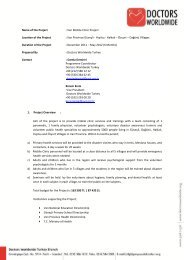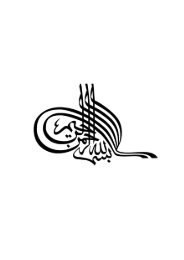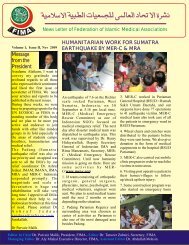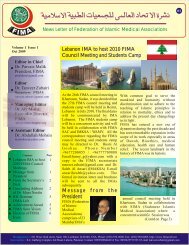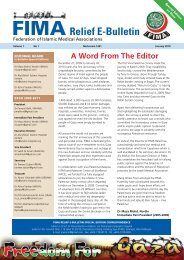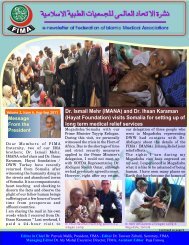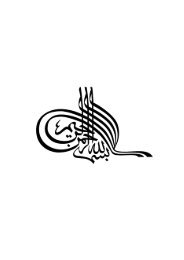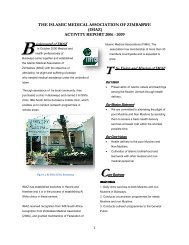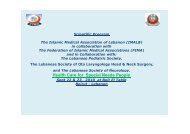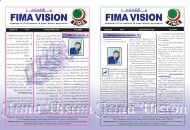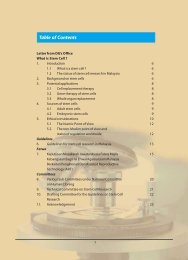FIMA Year Book 2009 - Federation of Islamic Medical Associations
FIMA Year Book 2009 - Federation of Islamic Medical Associations
FIMA Year Book 2009 - Federation of Islamic Medical Associations
You also want an ePaper? Increase the reach of your titles
YUMPU automatically turns print PDFs into web optimized ePapers that Google loves.
Muslim Contributions<strong>of</strong> hospitals were physicians. Manymodern hospitals have been developedon the same model as hospitals in<strong>Islamic</strong> era i.e. separate wards for maleand female patients, special apparel forin- patients, nursing staff and porters,qualified and licensed physicians topractice medicine, teaching facilitiesfor educating medical students, outpatientand inpatient departments,housing for students and house-staffand pharmacies dispensing drugsto patients. Hospitals kept records<strong>of</strong> patients and were equipped withconference rooms and librariescontaining the most up-to-date books.Holistic approach towards healingwas evident by the fact that in TulunHospital ( founded in Cairo in 873 CE)each patient on discharge received fivegold pieces to support himself untilhe could return to work (an example<strong>of</strong> holistic approach to patient care,considering not only the medicalcauses but the social, psychological andspiritual aspects as well).The libraries were well stocked withreference materials. The library <strong>of</strong> theTulun hospital had 100,000 books,Mustansiriyya University in Baghdadcontained 80,000 volumes; the library<strong>of</strong> Cordova had 600,000 volumes;Cairo had 2,000,000 and that <strong>of</strong> Tripoli3,000,000 books).State <strong>of</strong> the art hospital concept wasalso evident. The al-Adudi hospital<strong>of</strong> Baghdad (built in 981 C.E.) wasfurnished with the best equipmentand supplies known at the time. It hadinterns, residents, and 24 consultantsattending its pr<strong>of</strong>essional activities.The pr<strong>of</strong>essional activities were notconfined to hospitals; an Abbasidminister, Ali bin Isa, requested thecourt physician, Sinan bin Thabit, toorganize regular visiting <strong>of</strong> prisons bymedical <strong>of</strong>ficers.The hospitals were <strong>of</strong> two types - thefixed and the mobile. The mobilehospitals were transported uponbeasts <strong>of</strong> burden and were erectedfrom time to time as required. Similarmoving hospitals accompanied thearmies in the field. The field hospitalswere well equipped with medications,instruments, tents and a staff <strong>of</strong> doctors,nurses, and orderlies. The travelingclinics served the pr<strong>of</strong>oundly disabled,the disadvantaged and those in remoteareas. These hospitals were also used byprisoners, and by the general public,particularly in times <strong>of</strong> epidemics.Famous Muslim Physicians andSurgeonsSome <strong>of</strong> the great scholars <strong>of</strong> early<strong>Islamic</strong> era, who contributed not only tomedicine but several other disciplines,are as follows:Al-Razi (Rhazes born 865 C.E.) wrotethe first medical description <strong>of</strong> smallpoxand measles. He described the clinicaldifference between the two diseasesso vividly that nothing since has beenadded. His practical implementation<strong>of</strong> “infection” knowledge is reflectedfrom the incident when he was askedto choose a site for a new hospital inBaghdad. He hung fresh pieces <strong>of</strong> meat<strong>FIMA</strong> <strong>Year</strong><strong>Book</strong> <strong>2009</strong>103




